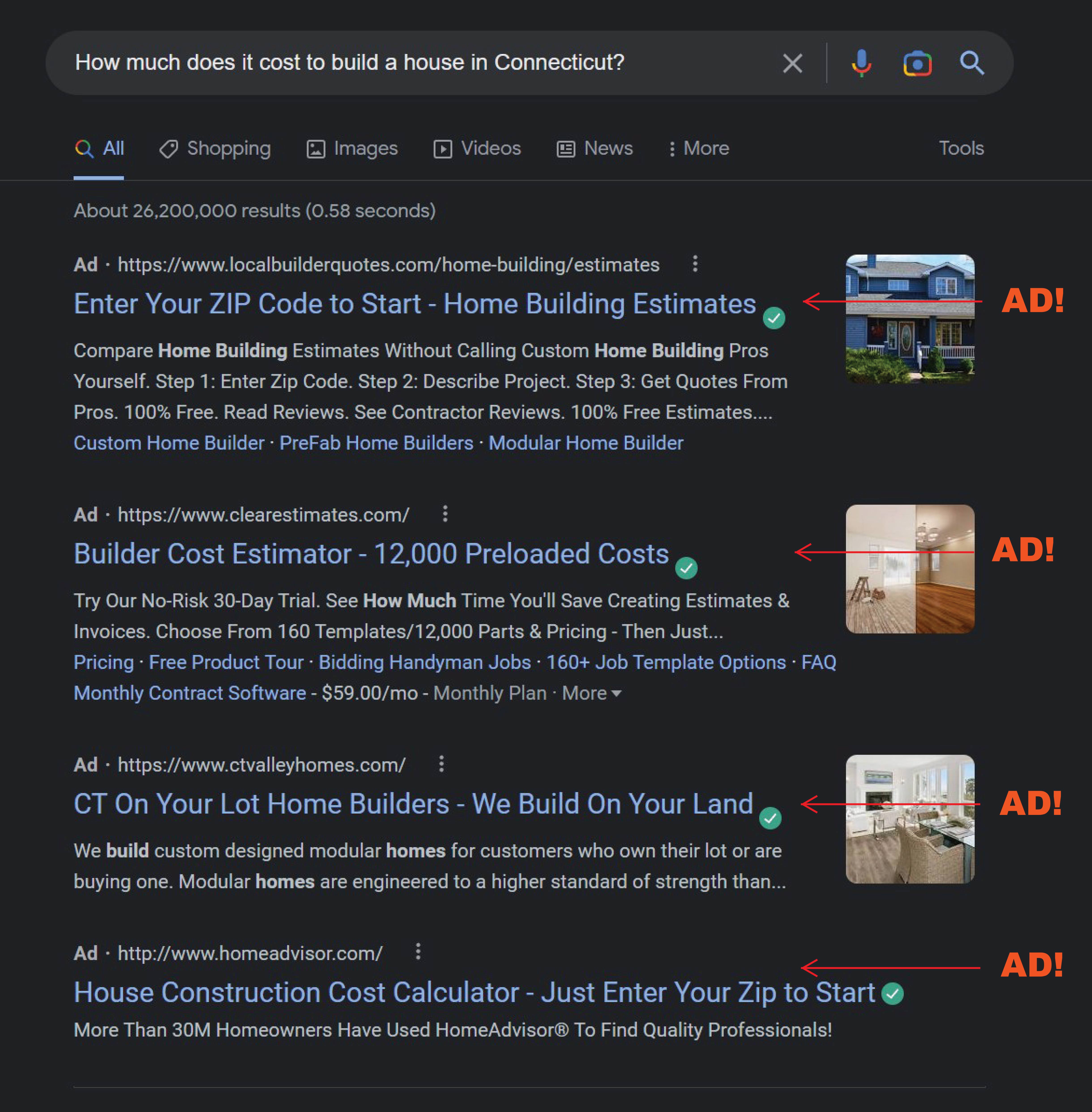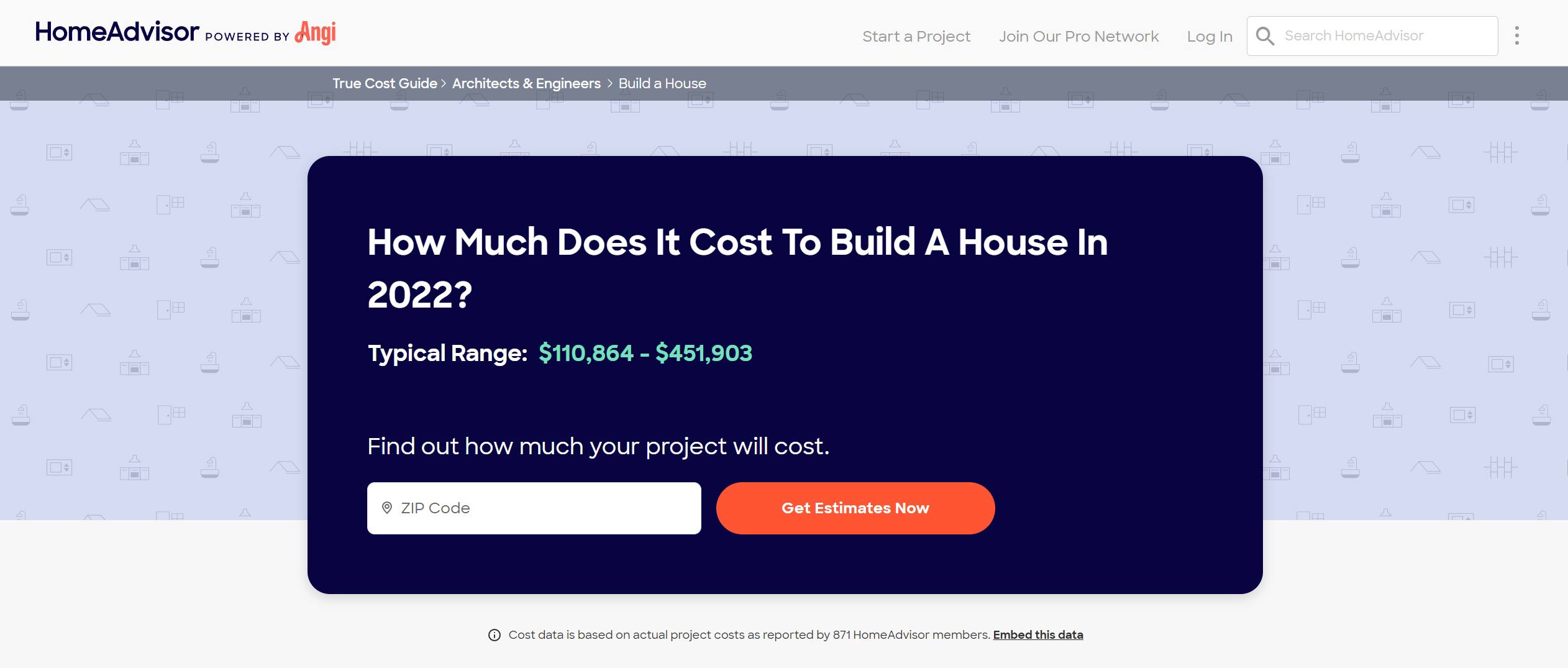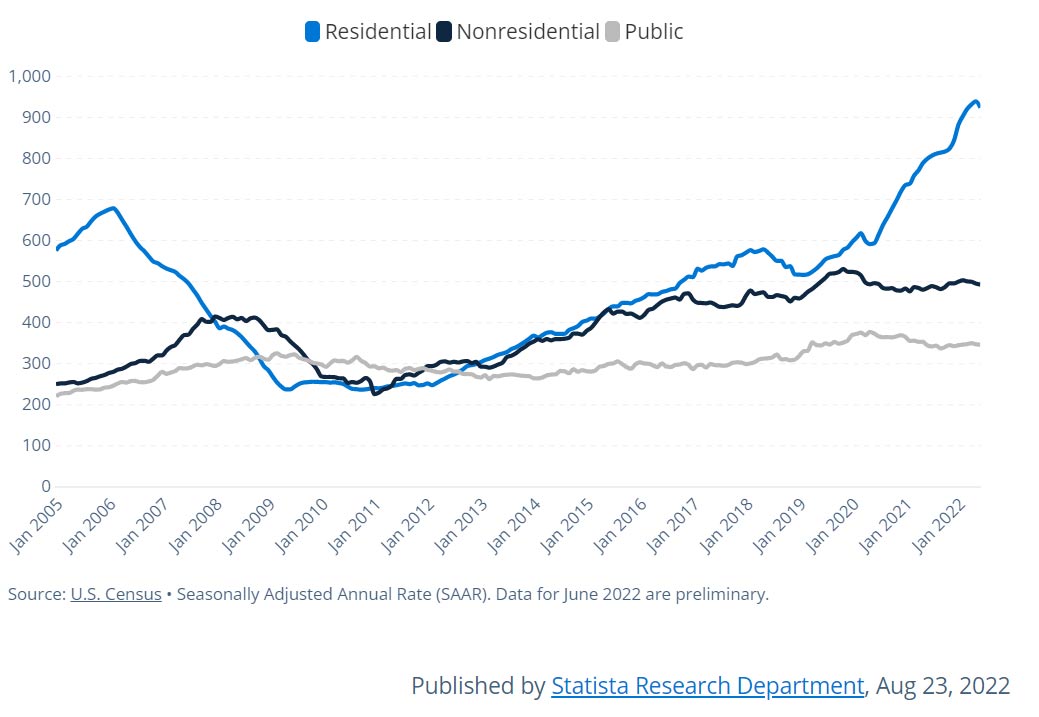Wait, how much am I spending on a new home?
It can be scary to think about how much construction costs, and to be honest, a lot of times it doesn’t make a whole ton of sense. Before diving into a project, it is important to set clear expectations with your designer and your contractor about what is a reasonable amount to spend. Designers and contractors are quick to say yes, leaving you with unexpected costs, and a project that might not get off the runway. In this article, we’ve put together some information to help you determine if building is right for you.
First, let’s dispel some myths. One of the biggest villains in determining expected costs of construction is the internet. With websites vying for services, they will say anything to get your business. When googling cost of construction, the first to the scene are Homeadvisor, and its parent company Angi.
It is important to look at these articles with a critical eye. Most are trying to sell a service. Sites like Homeadvisor, Angi, Houzeo, or even Bankrate are using these “informative articles” to soft sell their services. These services might be matching you with a professional, or securing a loan for construction, or even real estate services to help you find a property or home to renovate/build on.
Let’s break it down with a few examples. We googled “How much does it cost to build a home in Connecticut?” Unsurprisingly, the first page was entirely advertisements. With the search engine targeting customers as it does, the majority of websites we found were geared towards linking up customers with contractors. Since they have a financial incentive to get you to use their services, they’ll put their best foot forward and make building seem like a breeze.

Finally at the bottom of the page we see what looks like an unbiased article. It is produced by Homeadvisor, and cites data provided by clients. That has to be reliable! We took a look at it, and it indicated that costs to build were between $110,864 and $451,903. That gives us an average of $281,383.50, much cheaper than than the average cost to buy a house in today’s market.
And wouldn’t you know it? They also set you up with contractors to build. Something sounds fishy. So let’s break down how they got this number.
When sites like HomeAdvisor/Angi post their data, they neglect to provide detailed metrics of how they determined their numbers. The assumption is that this is all new construction, and one would assume it would be soup-to-nuts. But is it?

According to Connecticut Insider, 2,294 new homes were built in Connecticut during the first half of 2022. But, according to the State of Connecticut, an average of 19,327 building permits were issued. When we look at census data, we see that over half of those permits were for residential work, skewing the data so that renovation costs far outweigh new construction.

What ends up happening is that only 22% of the building that is being reported by sites like HomeAdvisor are new construction. If you break down the data, 78% of construction is remodeling, leaving you with a hefty sum of $110,864 - $451,903 for a renovation. That’s a lot! However, the data supports it. These numbers are for additions and renovations, such as a top end kitchen, or an addition over the garage, or even a new living room.
With the contractors we’ve partnered with, we’re seeing construction costs anywhere between $350 to $450 a square foot. Looking at the high end numbers, that aligns with a typical renovation. If someone on Homeadvisor is spending $451,903, they’re getting about 1,000 square feet of renovation. With the average room being about 300 square feet, it makes sense.
So how much does it cost to build a new home? Well, if we ignore the charlatans pitching us their wares, in the biz we refer to the RS Means construction data. Unfortunately for most, that comes with a pretty hefty price tag, and the necessity to put together itemized construction costs, leading to no clear cut answer for how much a new home will cost; however, there is hope.
We’re a big fan of recommending Cost to Build, a free construction cost estimator that uses regional data to give you a pretty good ballpark (within an 8% margin) of what it would cost to build. We ran a test on the site to see what it would cost to build a median average house of about 2500 square feet in Hartford County.
We used typical numbers, and included things like patios, decks, and midgrade finishes on appliances and hardware. We added a fireplace, and a garage and the grand total came out to be…

Over a million dollars. Yup. That’s a lot of money, and that doesn’t include property costs or landscaping, nor does it include the 15% contractor fee or the 15% architect fee. With these all in mind, one could be looking about 1.5 million dollars just for 2,500 square feet!
That is a far cry from $110,000 as Angi would have you believe, and it’s a scary notion. At James Montana Custom Home Design, we like to start with budget, because we know how scary the sticker shock is when a price comes in 10 times higher than what the internet told you. It’s easy to get suckered in by the sweet nothings of a marketing website, and we understand.
“ It’s easy to get suckered in by the sweet nothings of a marketing website, and we understand. ”
At the end of the day, we want you to build, because that’s where we come in, but we believe that we have a responsibility not to trick you into thinking a project will cost 10% of what it really costs. That just isn’t right. We want our clients to be well informed so that they can pick the right home for their needs. Now, will every home cost 1.5 million dollars? Hardly, but that’s where a good designer comes in. Working with contractors, value engineering, and getting you the best bang for your buck is part and parcel in the design game; but, it’s important to realize that if it sounds too good to be true, it probably is.
Stay savvy, friends. Don’t let an advertisement whisper sweet nothings into your ear, because at the end of the day, your home has to be on your terms.

